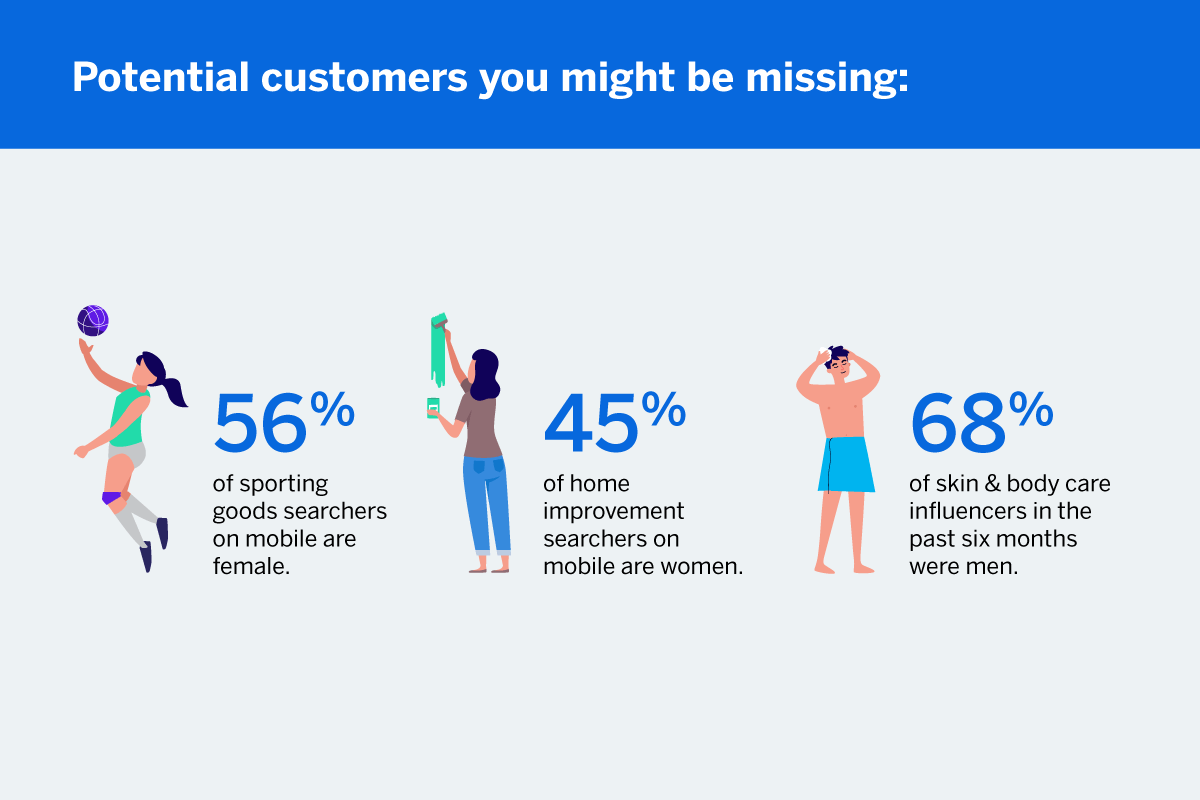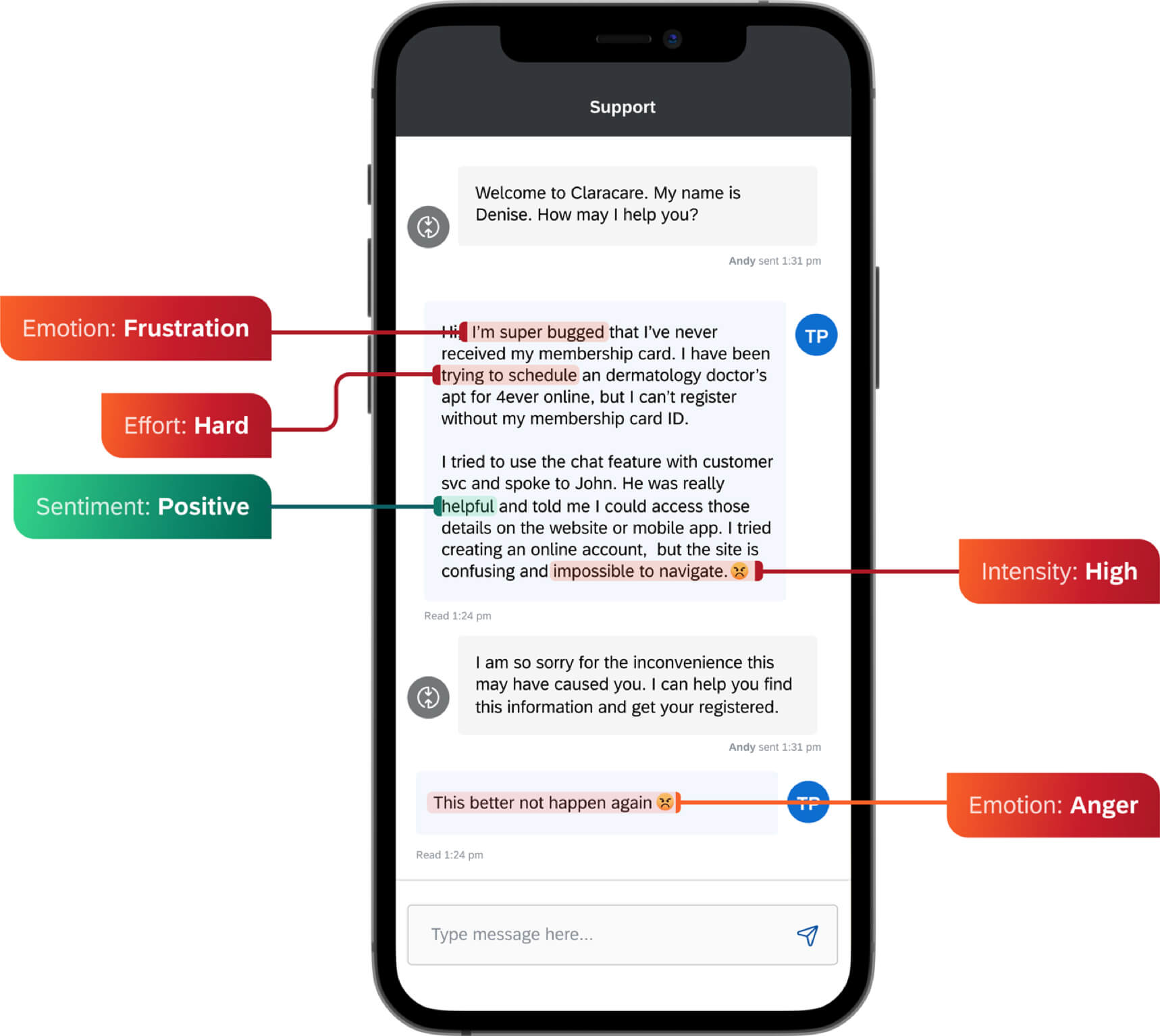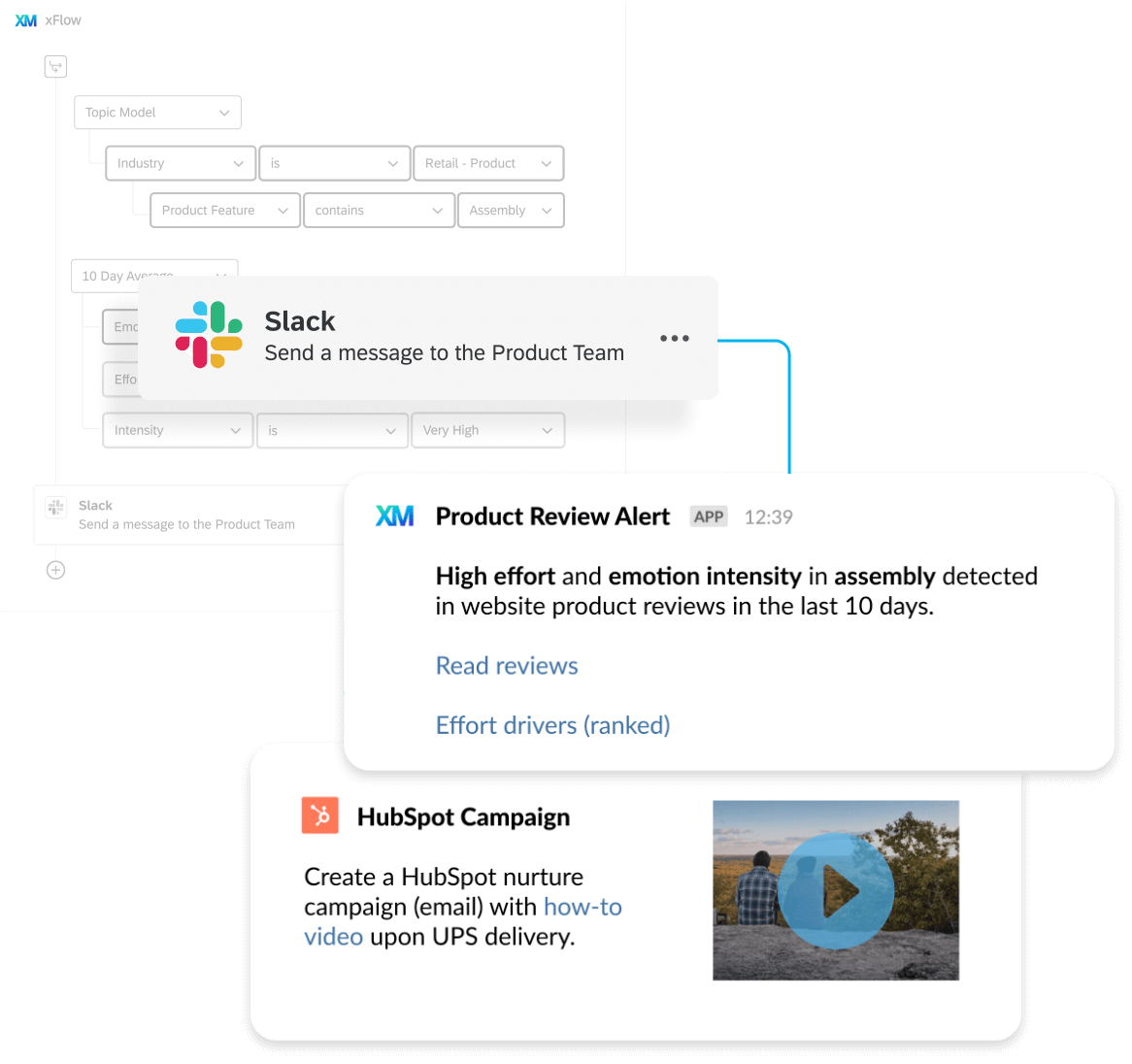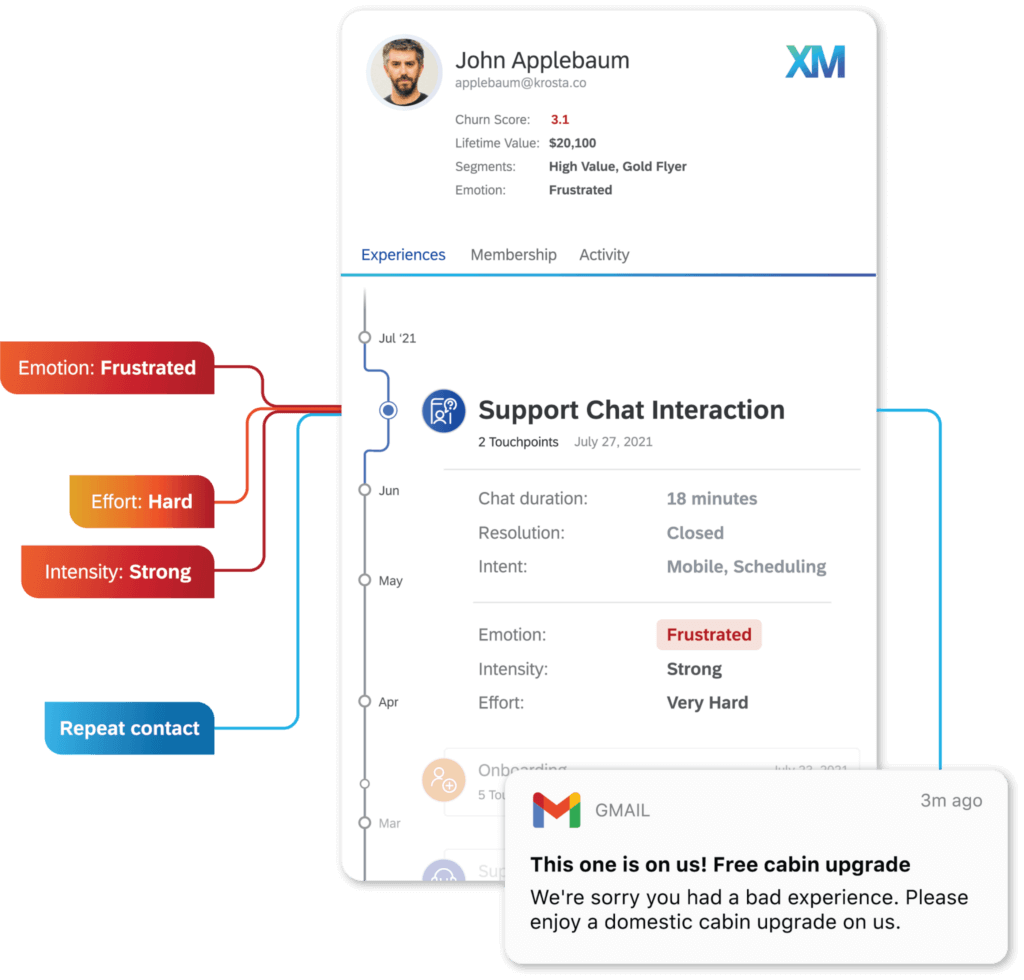What is customer intent?
Customer Intent is often understood as buyer intent or the purpose or reason behind a statement or action as part of a customer’s journey toward a purchase.
However, in the customer experience and service space, it can mean much more than just the reason for a call or a chat or a purchase. Detecting consumer intent helps you understand and classify what a customer is trying to communicate beyond what they are saying or talking about, whether it’s a cry for help, a question about a feature, or a heartfelt thanks.
Free eBook: 2024 global consumer trends report
Why is customer intent (also known as buyer intent) important?
Customer demographics don’t always signal intent
Often, businesses rely on demographic and geographic information to understand customer intent, making assumptions about potential customers based on their background and profile. However, without understanding their preferences and intent in-depth, you risk losing out on making the right strategic decision.
If you assume that a customer’s demographic always informs their intent, you could miss out on a significant audience. For example, Google has found that 40% of baby product purchasers live in households without children – and this is also the case for 52% of baby product influencers. If you had just assumed that baby products should be marketed to those with children in their household, you’d be missing out on a huge percentage of potential customers.

Demographics and intent do not always go hand in hand. Customer preferences and experiences vary hugely meaning you need to take a specific focus on customer intent if you’re to correctly anticipate what customers want and expect from you throughout the customer journey.
Customers are complex
Customer preferences change depending on their intent. If they plan to, say, just browse for a new television, they might go into a physical store to see what the picture quality is like. However, they might not make a purchase until they’re happy with the specs, having searched online for the best deal. Their two different intentions – to scope out the options and to make a purchase – mean they access two different channels.
Creating omnichannel customer experiences that drive customers to make a purchase means understanding what intent has driven them on their journey and acting accordingly. What do customers want right now, and why have they chosen a particular channel? Analysing customer intent means you can answer those questions and give consumers what they want. By understanding a customer’s preferred journey for certain tasks, you can begin to understand their intent better. If you know your customers typically communicate with your contact centre via chat to get an update on a delivery, you can take steps to resolve that query as quickly as possible.
Why is customer intent detection important for businesses?
When analysing customer feedback, being able to isolate certain kinds of intents can lead to productive actionability.
Customer intent detection means understanding customer intent on a granular data level. With basic NLP, businesses are able to categorise the topics and analyse trends from a customer interaction. And with advanced machine learning techniques and intent classification, business analysts and customer support representations can better understand the subtext behind what customers are communicating to better determine the next best action.
Compare these two feedback messages: “Your website sucks!” and “Your website would be so much easier to use if the chatbox didn’t cover up the login area!”. While we might be drawn to the obvious negativity in the first sentence, it is the second one that we would deem as actionable. It offers an explicit suggestion that unlocks valuable information we can use to identify specific pain points and design customer-centric solutions.
Intent detection goes beyond hearing what customers say and enables active listening to customers’ needs through customer intent data. As a result, you can take data-led actions and more effectively meet customer expectations.
This is particularly important in eCommerce, where the number of potential competitors for your customers’ attention can outweigh your product or service’s superiority. Even if you offer the best product on the market, if you don’t accurately judge buyer intent – browse for information, solve a problem, get a good deal – you might miss out on making vital sales.
Rise to the top with a digital customer experience that stands out
How to gather customer intent data
Understanding user intent will help you to better understand the journeys a potential digital customer will take. But how do you gather customer data and understand underlying intent?
Use a tool with semantic analysis to detect emotion, sentiment, and effort
Qualtrics + Clarabridge’s Intent Detection uses machine learning-based semantic analysis strategies to classify intent, helping you analyse your customers’ statements by what they are communicating to you so you can best respond.
Clarabridge can recognise 20 different kinds of sentence types or intents specifically relevant to CX. These sentence types give Clarabridge users the power to segment their data in ways that go far beyond traditional topic analysis. Common use cases include isolation of suggestions or requests, noise filtering to remove non-actional sentence types, and routing cries for help to appropriate agents.
Clarabridge Sentence Types
The following sentence types—specifically designed for customer experience—are the backbone of Clarabridge’s customer intent detection.
6 Question/answer types:
- No Comment
- Don’t Know
- Everything
- Yes
- List
- Cross-Reference
3 Social remarks types:
- Hello/Goodbye
- Thanks
- Laughter
5 Sentiment-bearing types:
- Generic Apathy
- Generic Criticism
- Generic Praise
- Recommend
- Not Recommend
2 Legal disclosure types:
- Disclosure
- Mini-Miranda
4 Actionable types:
- Suggestions
- Requests
- Cries for Help
- Churn
Apply this analysis to your customer data
You can apply this analysis of emotion, sentiment, and effort to the thousands of interactions you have with your customers to understand what they want out of their experience with you. Can you detect a customer is frustrated? This might give an indication as to her reason (or intent) for contacting you. For example, you could analyse:
- Customer feedback: Your customer surveys can help you gather information on why customers come to you in their own words.
- Social media comments: What feedback are you getting on social media platforms? What customer intent are they displaying on these channels?
- Third-party reviews: In neutral spaces, how do your customers talk about your brand and products? How did their experience serve their buyer intent?
- Calls and chats with your support services: What are customers saying to you, and what do they really mean? What got in the way of them fulfilling their customer intent?

Take action on customer intent data
Understanding consumer intent is only part of the process of winning over customers. Taking action is key to ensuring your customer journey accurately guides customer behaviour and enables customers to fulfil their intention.
The route your potential digital customer takes should encourage:
- Positive emotions: What positive emotions can you elicit, and how can you tackle negative feelings?
- Lower effort: How can you make the journey from interest to purchase simpler and hassle-free for potential customers?
- Better customer sentiment: What can you do or offer to positively influence your customers’ sentiments about your brand, products and services?
Analysing customer intent data means you can tailor their journeys accordingly to ensure you’re meeting these goals. Your buyer intent marketing strategy, your future product designs and more should include resolutions to customer intentions.

Here are a few examples of customer intent and supporting actions:
Customer intent: Resolving a product issue
Solution: Send them to the right customer service agent for their needs. Ensure issue is logged and changes made to avoid issue recurring in future.
Customer Intent: Complain about a service
Solution: Serve them an in-app offer for a lower price for the service and survey them about their issue. Ensure feedback is analysed
Customer Intent: Share feedback on social media to highlight problems or useful feature
Solution: Capture feedback and respond accordingly, giving thanks for input. Flag issue or note which feature was highlighted, asking for feedback on how the customer feels about your brand with a link to a survey.
Create a buyer intent marketing strategy
Understanding customer intent and taking action can help make your global marketing more effective. Developing a buyer intent marketing strategy means you can pinpoint when to serve customers marketing collateral and when based on their customer intent.
For example, you could:
- Supply useful how-to guides on your website for customers intending to find out more information
- Serve customers helpful suggestions on products’ specs on in-app push messages to assist them in comparing products for an eventual purchase
- Draw customers in with email offers when they haven’t interacted with your brand in some time or they’ve had negative interactions

Of course, getting accurate information and data-led insights is vital for making the right choices for intent marketing to implement.
Free eBook: 2024 global consumer trends report